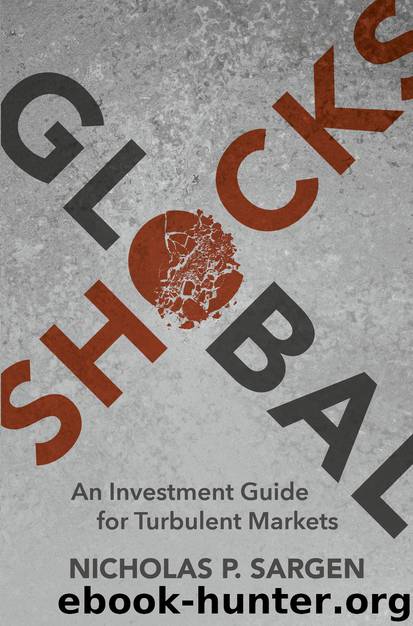Global Shocks by Nicholas P. Sargen

Author:Nicholas P. Sargen
Language: eng
Format: epub
Publisher: Springer International Publishing, Cham
Part II
Easy Credit Breeds Asset Bubbles and Instability
© The Author(s) 2016
Nicholas P. SargenGlobal Shocks10.1007/978-3-319-41105-7_7
7. Japan’s Bubble Culminates in Two Decades of Deflation
Nicholas P. Sargen1
(1)Fort Washington Investment Advisors, Cincinnati, Ohio, USA
Throughout much of the post-World War II era, Japan was the world’s most dynamic economy. Its economic growth rate far surpassed that of the USA and Europe, and it emerged in the 1980s as the world’s largest capital exporter on the back of a powerful export machine that generated persistent large trade and current account surpluses. In 1985 the economy was hit by a “yen shock” as the leading industrial economies drafted the Plaza Accord to produce an orderly decline of the dollar. Yet Japan appeared extremely resilient: The economy grew by 4–5 % per annum in the second half of the 1980s, while the stock market and real estate values soared as interest rates fell to record lows.
Conditions changed dramatically by the end of the decade, however, when the Bank of Japan tightened monetary policy to combat “asset price” inflation. While Japan’s economy withstood the initial tightening, it stagnated in the early 1990s, as the stock market and real estate market both dropped precipitously. Over the next two decades the economy was mired in a low growth trap that over time created deflationary pressures.
This dramatic about-face in economic performance poses several questions for investors:1.What went so wrong to transform a dynamic economy into one that languished for two decades?
Download
This site does not store any files on its server. We only index and link to content provided by other sites. Please contact the content providers to delete copyright contents if any and email us, we'll remove relevant links or contents immediately.
The Black Swan by Nassim Nicholas Taleb(6762)
Bad Blood by John Carreyrou(6274)
Pioneering Portfolio Management by David F. Swensen(6078)
Millionaire: The Philanderer, Gambler, and Duelist Who Invented Modern Finance by Janet Gleeson(4092)
Skin in the Game by Nassim Nicholas Taleb(3965)
The Money Culture by Michael Lewis(3844)
Bullshit Jobs by David Graeber(3826)
Skin in the Game: Hidden Asymmetries in Daily Life by Nassim Nicholas Taleb(3720)
The Wisdom of Finance by Mihir Desai(3523)
Blockchain Basics by Daniel Drescher(3327)
Liar's Poker by Michael Lewis(3220)
The Intelligent Investor by Benjamin Graham Jason Zweig(2930)
Hands-On Machine Learning for Algorithmic Trading by Stefan Jansen(2925)
Mastering Bitcoin: Programming the Open Blockchain by Andreas M. Antonopoulos(2890)
Fooled by Randomness: The Hidden Role of Chance in Life and in the Markets by Nassim Nicholas Taleb(2860)
Investing For Dummies by Eric Tyson(2791)
The Power of Broke by Daymond John(2770)
Market Wizards by Jack D. Schwager(2538)
Zero Hour by Harry S. Dent Jr. & Andrew Pancholi(2531)
